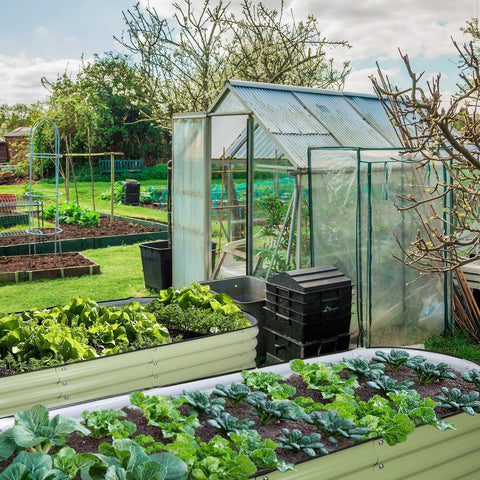Knowledge from Olle Garden Bed: How To Make Plants Recover From Frost Damage
ou take care of your plants wholeheartedly, so it is worth paying attention to when frost damages your baby. Frost produces small ice crystals in the cells of leaves and branches of plants, but it will also expand with the formation of ice. This will open these cells and kill the plant. After frost, look for signs of such damage, such as withered, brown and dry leaves. If you see these indicators, frost may have taken your plant hostage. The following content also has some reference value for raised garden beds.
Are you ready for the good news? You can take some steps to try to save your plants after frost damage. With some care and patience, you can help restore plants and prepare for future frost.
Be patient before pruning
When you first see signs of frost damage, such as yellowing or browning leaves, your first instinct may be to trim them. However, it is better to wait patiently. If you trim it immediately, you may not be able to see the full extent of the damage. Some parts of plants that seem to have died can be naturally revived. In addition, dead leaves can also protect the living parts of plants from future frost.
How long will you wait? It depends on the plants. You will begin to see the damage on the leaves in just a few days. For larger branches, you may have to wait several months until it is completely obvious.
A good rule of thumb is to wait until you see new growth. Find new green leaves or scrape a little bark from the wood on the branches with your nails. If you see green wood, then that branch is OK, but if the wood is black or brown, then the frost has killed it. Then, you can trim all the dead skin of the plant, including any dead wood.
Interesting fact: frost will not kill all vegetation immediately. Some types of plants survive better in light frost than others. For example, broccoli plants can survive at temperatures below 28 degrees Fahrenheit.
Waiting for fertilization
It may be tempting to fertilize plants immediately after frost. Fertilizer can promote the growth of plants through necessary nutrients, so this sounds like a good idea. However, this is a common mistake you should avoid. Fertilizing plants too early will put extra pressure on your plants. This is because fertilizer helps promote growth. Your plant needs to give priority to healing rather than rapid growth.
Instead, wait until you see green leaves and other natural growth signs. This indicates that plants are recovering. Then, you can fertilize when the temperature is always higher than 32 degrees Fahrenheit. Remember that not all plants benefit from the same fertilizer. Always study the needs of specific plants first.
Water helps restore
Watering after frost can also help your plants recover. Feel 1 to 2 inches of soil near the bottom of the plant. If dry, water the soil thoroughly. This will help replenish water for your plant and provide the water needed for healing. Although watering plants is usually important, it is especially important after frost. Groundwater may freeze, preventing the root from absorbing it. Provide water for your plants to thaw the frozen soil.
Professional tips: You can also water plants before frost to keep them healthy and give them a better chance to survive.
Prevention is always the best
The best way to restore plants after frost is to help prevent damage first. You can take some key strategies. First of all, choose plants that are hardy in your planting area, because they can better withstand the lowest temperature in your area. For example, kale, onions and radishes are frost-resistant vegetables that can tolerate temperatures below 28 degrees Fahrenheit
In autumn, apply 2 to 4 inches of wood covering around the plant roots. Create a doughnut-like shape around the bottom of the shrub or tree. The center of the doughnut should extend 6 inches from the trunk.
You should also thoroughly water the soil before frost. This will prevent frost from going deep underground. Then, check the soil for any cracks and fill them to prevent cold air from damaging the roots. Last but not least, wrap the plant with burlap to protect the leaves.
Gardener rescue
Frost can cause extensive damage to plants. To help plants recover, please wait for new growth until you trim or fertilize and immediately water the soil. For the best results, you can also prevent frost damage by planting frost-resistant plants, covering the roots in autumn, and wrapping plants with burlap.


